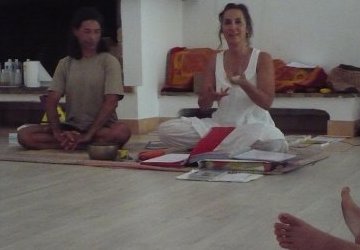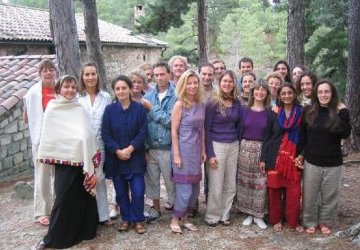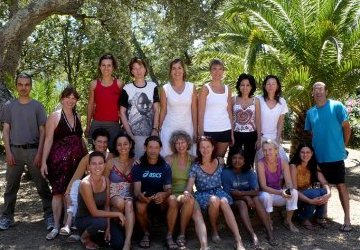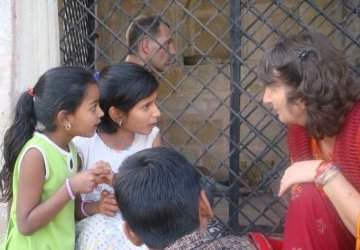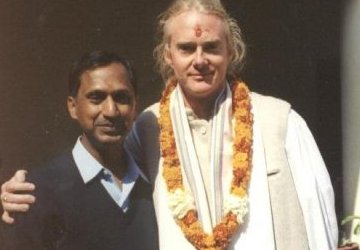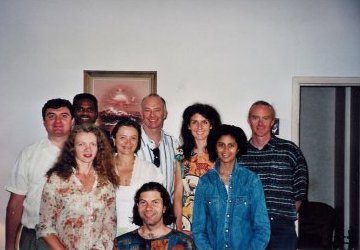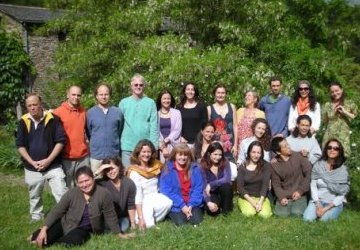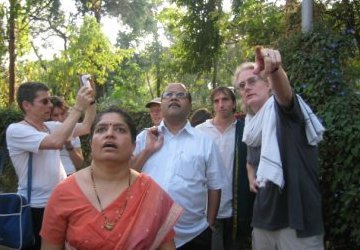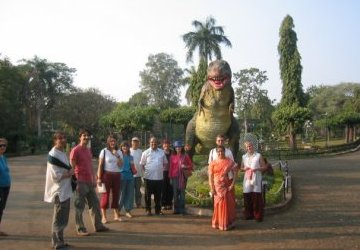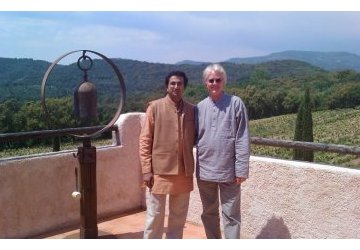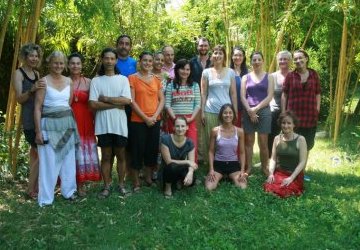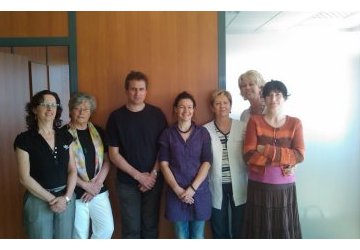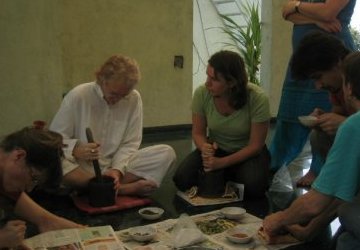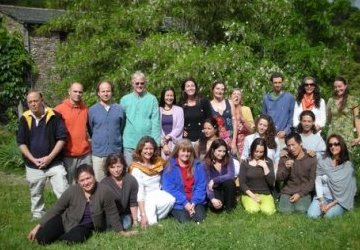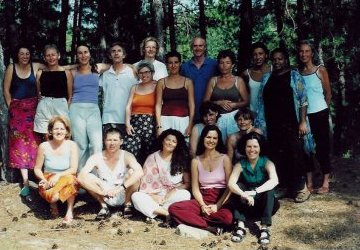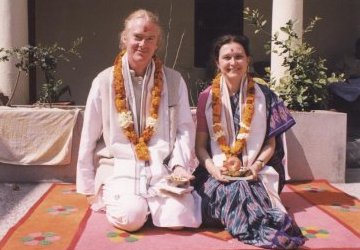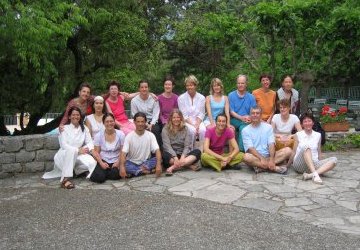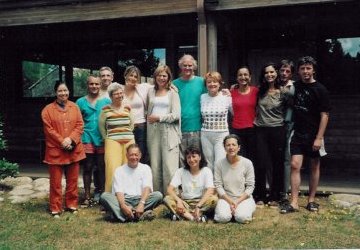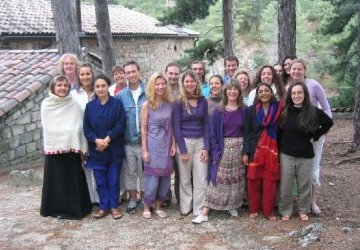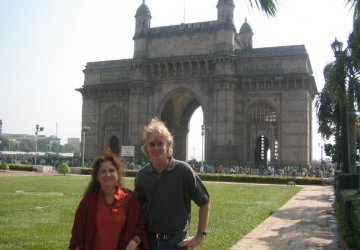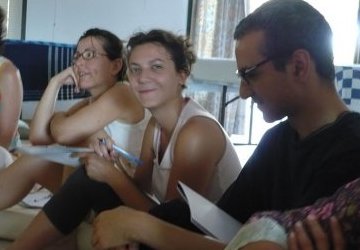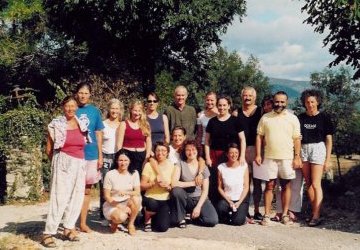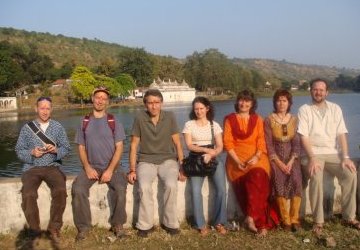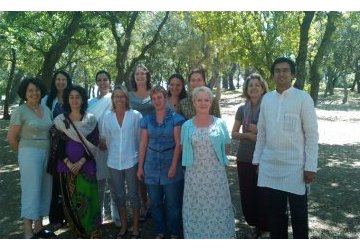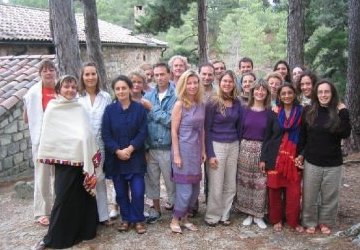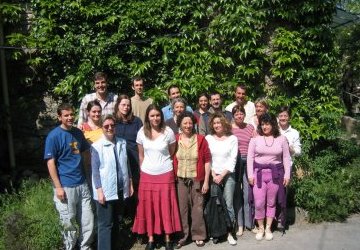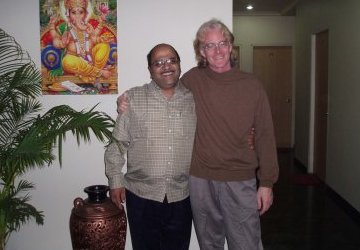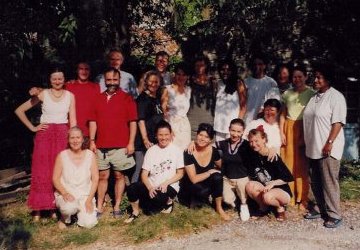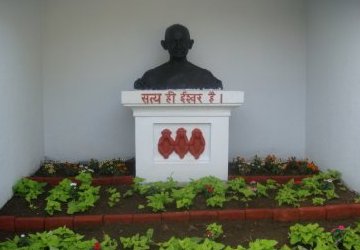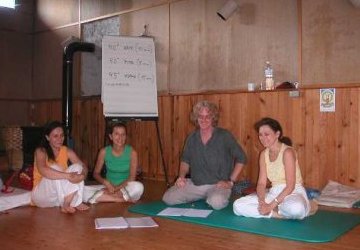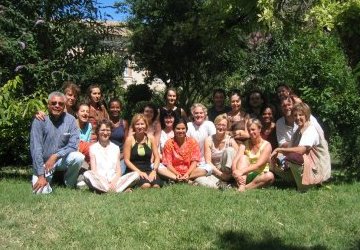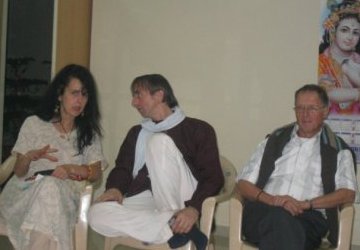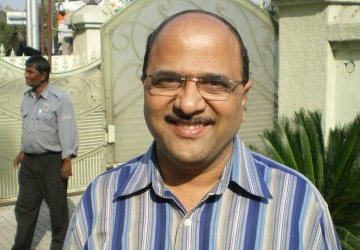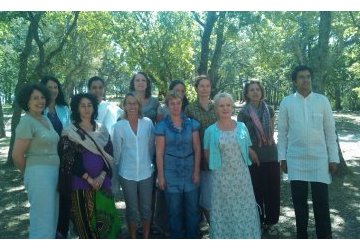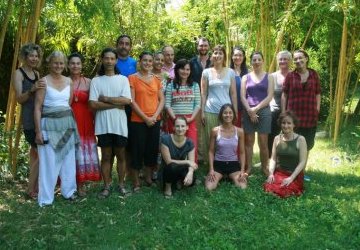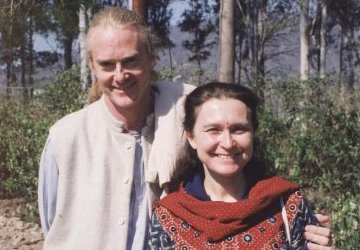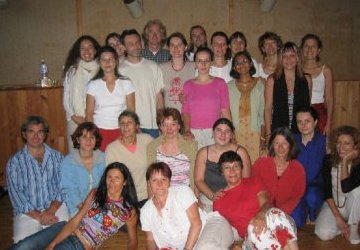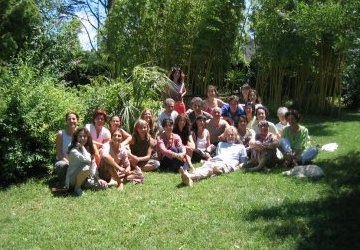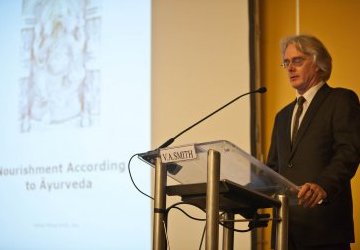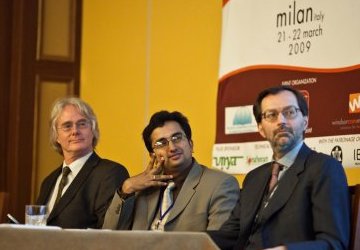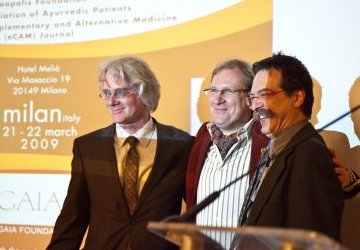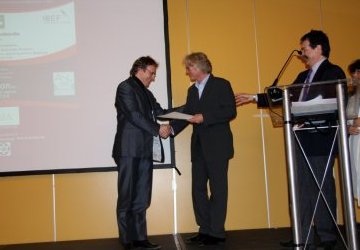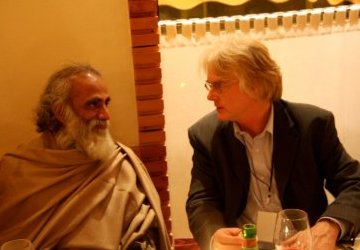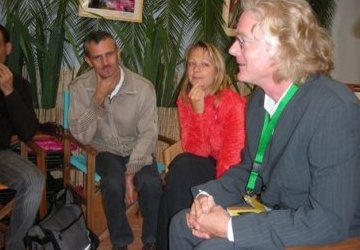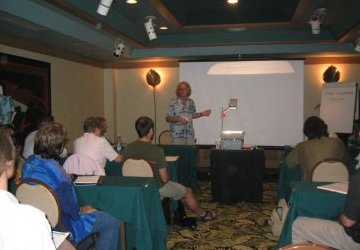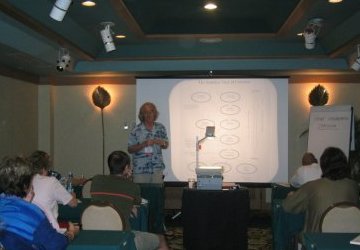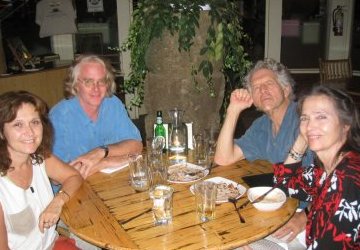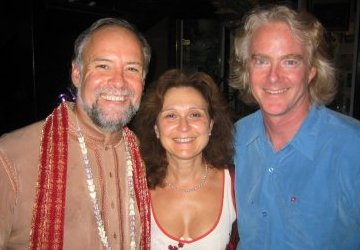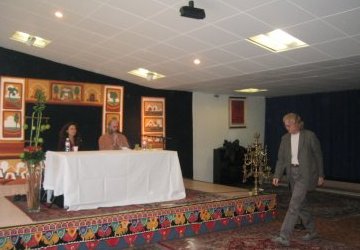Biochemical and Ayurvedic Nutrition
This is a supplement section to the main part of the book that was removed. Initially this section was a primary part of the book. However, I feared that it might be too complicated or dense for the average reader. Nevertheless, I personally feel that this section is critical to a complete understanding of Ayurvedic nutrition. Yet, it is difficult on several levels. This section involves not only two different medical and nutritional systems, but also a lifetime of social conditioning. Our social conditioning may present the most difficult aspect in comparing the systems. In this section we will look at both systems and understand their different approaches.
As stated in the beginning of the book, Perfect Balance, modern science is a belief system. As a system it has socially replaced the traditional role of religion as the ordainer of health and happiness. The dilemma today is that modern medicine is failing to reward many people with the ’promised land’ of health and happiness. Over the last decade dissatisfaction with the current medical approach has caused an enormous increase in more natural and traditional forms of health care. For some curious reason the traditional forms of medicine are called ’alternative’ forms of health care. This raises the questions whether a diet based on whole foods is an alternative. It is indeed an alternative to eating highly processed junk food.
In addition to modern medicine losing the interest and faith of the majority of people it also has numerous internal factions. In the scientific field itself there is little agreement on collected data. What data is collected is usually interpreted differently by different people. Most subjects have at least two different points of view and very often, many more. Unfortunately, the common person is not aware of the different points of view as the scientific community usually bands together to present a public point of view while they argue amongst themselves the merits or demerits of either standpoint.
The benefits of modern medicine are many. Yet, the dangers are numerous. Modern nutrition is an outcome of modern medicine (allopathy). Hence, what applies for modern medicine also applies to modern nutrition. The purpose of this book is not to criticize or condemn anything, anyone or any system. But rather to really look at some of our fundamental beliefs of nutritional science and see if they are true and if they actually work. One basic truth needs to be understood - modern medicine and nutrition do not fully understand the complete functioning of the body.
Science is based on presumptions and theories that we often mistake for reality. Professor Bohm explains this beautifully: "What will be emphasized, first of all in scientific research and later in a more general context, is that fragmentation is continually being brought about by an almost universal habit of taking the content of our thought for ’a description of the world as it is’. Or we could say that, in this habit, our thought is regarded as in direct correspondence with objective realityŮThus, in scientific research, a great deal of our thinking is in terms of theories. The root ’theory’ derives from the Greek ’theoria’, which has the same root as ’theater’, in a word meaning to ’view’ or ’to make a spectacle’. Thus, it might be said that a theory is primarily a form of insight, i.e., a way of looking at the world, and not a form of knowledge of how the world is." Modern nutrition is operating with different theories and not on any real direct knowledge of reality, outside of numerous fragmented laboratory studies.
We can roughly divide the present nutritional models into two groups - biochemical and natural. These two categories don’t work well, however. The main reason is that the term ’biochemical’ is used to describe modern medicine - to look at things as a sum total of its parts, or chemicals. Or as some physicists call it the ’atomic building blocks’ method as it is based on the concept of the atom as being the fundamental unit of matter (or as was later found out the components of the atom). This belief system has a mechanical way of looking at and understanding the functioning of the universe.
The problem is that ’natural’ nutrition and ’natural’ medicine are also using the same mechanical model to understand the universe and the human body. An attempt to change this approach in the last decade with ’mind / body’ systems or ’holistic’ approaches has helped somewhat. Unfortunately, they are usually practiced or applied through a mechanical model of the universe. We are actually left with one mechanical system and two approaches - a ’biochemical materialistic’ and a ’natural materialistic’.
There is a third option that actually contains both the biochemical and the natural approaches, yet it goes beyond both in scope. It is Ayurveda. This system has a totally different point of view and does not use the mechanical model at all - yet it understands it well. It just finds it very limited in scope. Remember that we are still using surgical techniques developed by the ancient Ayurvedic physicians. They had a very good understanding of the mechanical structure and form of the body and universe. It is by the recognition of the mechanical approach - its pros and cons - that Ayurveda can include it. And as all of its methods, medicines and therapies are ’natural’ it also includes the naturalistic forms of medicine. However, Ayurveda is based on a vision of wholeness and unity that is supported by a conscious intelligence that goes beyond the purely mechanical view. To understand the differences between the systems we need to look at each one of them individually.
Biochemical View Follows a Mechanical Model- The modern view of medicine and nutrition is that the totality is made up of the individual parts. If we understand the parts individually then we understand the whole. Currently nutrition and medicine are based on the Newtonian model of physics - or of mechanics. As the world of physics is changing and many scientists have been moving away from mechanical physics to ’new physics’ over this last century, we may wonder if mechanical nutrition has the same validity as we once thought.
This approach tries to reduce everything in the physical universe to a form of matter and then understand its function. Various means are created and used to measure the components under study. However, these measurements are subjective concepts and are imposed on the material universe by the human mind. This is extremely interesting in physics and the study of all physical matter. Nonetheless, the human being is composed of more than just physical matter. This mechanical approach also tries to reduce the mental and emotional functions to physical components.
Scientific studies are based on subjective measurements along with another subjective standard that is related to it by some, hopefully, logical means. Something is then observed according to these two subjective classifications and compared. Usually the purpose is to prove or disprove something so the measurement and the standard have to fit the initial concept or theory of the creator of the study. But neither the standard nor the unite of measurement has any context outside of its use for the study. This is important to understand, as applying these kinds of studies to the human body is fraught with problems.
It is also interesting to note that science acknowledges and integrates information to the extent that it is able to use it and fit it into an existing model. If something does not make sense - which means it does not fit into a current view - then it is discarded. Generally things are used that fit into and support a logical growth and progression of thinking in any specific area. Once more it must be noted that much of the data discovered in research is not used, as it does not fit into any currently known model. Biochemical approaches are invasive to the body and mainly use man made substances to induce physical responses. The relation to the mind is only considered in relation to the chemical function and does not account for things like how you feel. These methods require that the person is passive and accepts an outside authority in the form of a medication or person, or both. One needs to give up personal responsibility to the trained professional. This method relies heavily on machines and instruments to measure and judge what is normal or not. The patient is reduced to the purely physical aspects and again is not considered subjectively. For example people are not questioned if a therapy or test that zaps their body with unseen radiation is disturbing or frightening for them.
In nutritional science the mechanical approach tries to reduce the body into a factory and the food into a form of fuel that feeds the factory. It tries to understand the physiological functions and needs of the body and see how these relate to the fuel source. It sounds pretty simple and clear until we look at the size and complexity of the factory.
The body has about a trillion cells (a trillion = 1,000,000,000,000,000,000). Each of them functions according to its role in the body. A liver cell functions like a liver cell and a tissue cell functions like a tissue cell. We don’t know why they do this or how they ’know’ their correct function in the body. Genes, RNA and DNA are used to explain this action, but this has not completely resolved the issue. Modern medicine in general does not acknowledge an inherent principle of intelligence in each cell or a principle of life that integrates these cells. Currently it is in fashion to blame many social problems and diseases on genetics. While genetics must play an important role, the unity of the body’s intelligence as a whole is not addressed (similarly, a universal intelligence or consciousness is not addressed either).
Actually the mechanical model of understanding the cell is decidedly limited. The cell itself is made up of numerous different kinds of molecules that are in constant interaction with other molecules. Each of these relationships affects the overall functioning of the cell. Yet, to study a cell without understanding or accounting for the subtle actions of the molecules that make it up is very limited, if not blatantly wrong. Many innovative research scientists are projecting the model of quantum physics into the cell itself. This view perceives the interaction of the molecules as an energetic relationship that goes far beyond the idea of a bunch of molecules floating around in saline fluid relating only in a mechanical manner to external stimulus.
The function of any cell in the body is complex. Moreover, the body has some form of intelligence that governs the cells as a whole and individually. When cells don’t behave in the right way they are destroyed and eliminated by a maintenance network in the body - the immune system. Biochemical nutrition does not understand the complete picture of this factory - it’s just too big and too complicated.
The vastness is one problem. Another is the interrelationship between systems. This is the hardest for us to understand, as we have never been told about this concept. Here we come back to the study model that needs to create a subjective unit to measure things, and another standard that needs to be created to judge it against - fragmentation. Statistics can now be gathered and defined according to these two subjective factors. But this approach leaves out the fact that not one system, cell or organ in the body functions alone.
The real problem at this point is that it is physically impossible to study all the possible relationships between a trillion cells - not to mention the relationships going on within each individual cell. Even if we reduce the cells down to their organ, gland, system or function the possibilities are still infinite. How then can we structure our study - which begins with a concept and two subjective factors - with so many possibilities? We must decide what is more important to the issue under study. But how can we do this if we don’t understand the total relationship of the body? We can’t.
Another example of the difficulty inherent in this approach is the organisms that live in the body itself. The large intestine is the primary site of a major colony of guests that live in the human body. One researcher has been so bold as to state that the colon supports a whole ecoculture that is impossible to presently comprehend. This is a pretty bold statement, one that becomes clear with the following information. The colon supports between 400 to 500 bacteria that help to digest and process food and nutrients. The colon also supports another 100 to 200 fungi that contribute to the digestive process. Additionally, there are about 100 different kinds of virus living with the bacteria and fungi.
Imagine a room with 700 dogs, cats and rats. The bacteria, fungi and viruses are not of the same species, they are very different in composition, action and effect. First try to understand all of the possible relationships between the individuals in any one group. Then add the relations between the three different groups. We now have a very complex ecosystem that - if disturbed - would result in chaos for one or all of the various groups. In the human body this ecosystem is normally kept in balance by a healthy diet and lifestyle. It is thrown into turmoil by the use of drugs, poor diet, artificial foods, and some medications like antibiotics.
There is an additional factor. Each person has a different set of inhabitants. This means that our dogs, cats and rats are different from person to person, culture to culture and continent to continent. This makes a very real challenge for the biochemical researcher - how to find a common or average set of digestive flora in the human body? In fact, all human bodies present these kinds of challenges and what is truly amazing is the progress and understanding that does exist. Biochemical medicine has made truly remarkable progress in understanding certain functions of the body. It is due to the brilliance of doctors, chemists and biologists over the last several hundreds years that some diseases have been largely eliminated from humanity.
The task is truly monumental. Especially when we add an additional factor - the complexity of food itself. Natural food - not processed or refined - is filled with many things besides vitamins, minerals, proteins, carbohydrates, and such. There are, as yet, many unidentified components in food as a whole. Even with all the known items that comprise food the interrelationship between them all is extremely complex and not well understood. What is known is then based on a subjective energy unit; the calorie. What exactly is a calorie? It is a measurement of heat. Nutritionally one calorie is the amount of energy needed to raise the temperature of a liter of water 1Рcentigrade. This is a subjective way of measurement, which is used to determine the energy source of fuel or food.
Clearly understand that this way of measuring energy consumption is subjective as described above and may have little or no bearing on nourishing the body. This is clearly seen in that one can easily gain 2000 calories by eating cakes, jams, and candies yet gain absolutely no nutritional value for the function of the metabolism. This is in fact the exact situation in the United States today. Using the methodology of the calorie we cannot understand the total relationship within the digestive system much less the relationship between the nervous and hormonal systems which control all metabolic function including the digestion of food and ultimately the assimilation of nutrients. The complete function of nervous or hormone systems are not fully understood within themselves so how can the interrelationships with processing nutrients be understood? Do two partial pieces of information make a complete understanding?
In this light we can begin to question whether or not a calorie has any meaning outside of the physics lab. We are faced with the possibility that there are a number of issues involved - a faulty unit of measurement may be one. Certainly the whole psychological state of the dieter must be considered. How can we do that with a mechanical model - with the biochemical model? Tell the person that they have no will power? Tell them that their problem is psychosomatic? Tell them to see a counselor? Certainly all these factors are important. Nonetheless, it is problematic to view the psychological state as a mechanical function. How do we find our way through this mess when we look solely at the mechanical level?
Another problem with the biochemical model is that it changes with time. As the functions and relationships in the body are understood better then the previous ideas, concepts and theories are revised, changed or discarded. This is a healthy process of learning and change. The problem is that this confirms the partial knowledge we have of the body and yet we continue to develop treatments only based on fractional knowledge. This does not make good sense. We are not going to build a rocket when we only understand 60 percent of the procedure. If we do try to build the rocket we will get a 65 percent finished product. Because, let’s assume, we learned 5 percent during the process of manufacturing. The problem is that this 60 - 65 percent knowledge is being applied to our health - it may cure us or kill us - we just don’t know.
Large companies and people in the health industry do not actually question the fundamental approaches behind the current therapies. They also do not mention that they only have partial knowledge of the human body. The public in general has been conditioned to think that modern science does understand the majority of the functions of the body and the complexity of fuel intake through food consumption. This is simply not true.
To digest any given item we need to consider a number of subsystems in the body and a mind boggling array of minerals, vitamins and other nutrients. This complexity is compounded by hundreds of bacteria, fungi and viruses that assist and contribute to process of converting nutrients. This all facilitated by enzymes - something that we still know very little about. Plus, nothing can function in the body without the nervous system and the hormones that serve as the body’s messenger service. As already mentioned these two systems are not completely understood. When we add in all the enzymes that are needed to carry out the actions of the messages of the nervous and hormone systems we increase the complexity. When we then add the raw materials that all three components need to function we get a very complex interrelationship.
What if we give the body too much or too little of a raw material? Yes, imbalance or even chaos results. In fact, no one knows what happens. There has been no study that examines the long-term use of mega doses of nutrients, or completely eliminating an element like cholesterol from the diet. Heart disease on one hand can certainly be viewed as too much of raw material as can type II diabetes or obesity. Certainly, we know the result of too little of many nutrients in the form of degenerating diseases or malnutrition.
Additionally, biochemical nutrition does not consider the source of the raw materials to be important beyond their chemical structure, e.g., sugar is sugar, refined white or unrefined. This is strange, as studies have existed from as early as 1936 showing that the effect of refined white sugar is very different than raw sugar in sugar cane. It is well known that sugar causes tooth decay, yet a study of South Africans who chew four stalks of sugar cane a day have better than average teeth and a low percentage of cavities.
This finding was repeatedly supported in laboratory studies. The same correlation was found with diabetes, sugar consumption, and sugar cane workers in Central America. Once more these results where supported by laboratory studies and found to be true. The fact is that refined sugar has a very different effect on the body than raw, non-refined sugar. Yet the biochemical nutritional community continue to state that the molecular structure is the same, so all sugars function the same in the body. This is in direct conflict with their own information and simply not true. This also extends to all foods, not just sugar.
On a more specific level, biochemical systems do not talk about the physical residue that is left in the body from man made chemicals or highly refined foods. They are aware of these residues and consider them to be negligible. The question of residue and what constitutes a problematic amount is completely prone to subjective measurement. Who decides what amount of waste is acceptable in the body and by what means?
This is a major difference in the two mechanical schools - the natural and biochemical. The biochemical says a molecule is a molecule regardless of where it comes from. They do not explain that the effect on the body’s ability to eliminate an organic (from an alive source) and inorganic (from a dead or manufactured source) is different. Things produced in a factory or laboratory pose problems for the body’s enzymes, as the material is not inherent in nature. Hence, some part of the material is always left unprocessed. Biochemists shrug off this fact. They assume that the liver and kidneys - the organs of filtration and processors of toxins - will manage, hopefully, to get rid of the residue.
The school of natural medicine knows that the source is very important. This understanding is filtering into the biochemical community and many books now tell you to add lots of fresh vegetables and grains in your diet. The last ten years has seen an enormous increase of books and diet plans listing the importance of fresh food sources. If the molecule structure is the only important factor then why is there this revival in biochemical nutrition for fresh food? Well, it is because scientific studies have been showing this difference for the last 25 years.
Old habits die hard. Especially when there is a strong economic implication on change. So now you find every new book on nutrition telling you to eat more fresh things, but not going into qualitative differences. This includes items like chemical additives and preservatives, synthetic vitamins, refined foods, and generally huge economic industries. We can summarize the mechanical systems as qualitative. They are primarily looking at the quantity of things and trying to understand the relationship of things in that context. Things can be measured, compared and studied accordingly. However, can we judge life through quantity alone? I personally know happy people with average or low incomes and very unhappy people with large incomes. Can we then only use a quantity - a subjective concept of measurement - to judge any aspect of life? Dietary economic or otherwise?
This is the fundamental question we need to ask ourselves. Are we only worth the car we drive, the brand of cloths we wear, or the coffee brand we drink? Can we as an individual be reduced to a measurable object? Our joys, hobbies, passions, our feelings and ideas; are all these measurable objects? If this is not true, if we are more than a product consumer, more than a food factory, how far is quantitative nutrition valid?
The primary response for all of us should be to look around and see if this model of viewing the world is working. What is your personal experience? Do you really want to be seen as an amount of anything? I think not. I believe that each of us wants to live and enjoy life fully with a healthy body and mind. Being reduced to a statistic, average or number is not part of my understanding of health or happiness. To use this same understanding for nutrition is extremely limited, perhaps even dangerous. My own experience is that biochemical nutrition just doesn’t work consistently.
Ayurvedic View Follows a Mind / Body Model- Ayurveda views life as a complex interrelationship of forces - some chemical, some physical and some subtle - like mental functioning. It says that you have to try to understand life through understanding the complete picture. Trying to go through individual parts will not help you to understand the totality of life because it is not limited to the parts. Each part cannot be seen outside of the whole to which it belongs and supports.
This view recognizes that each part has an individual quality, action and function. This is not questionable and is not in conflict with the mechanical model of understanding the universe. However, this is only the beginning point and not the end point that the biochemical approach wishes it to be. From this point on the differences begin.
Ayurveda takes the stance that due to the interrelationship of all matter one cannot understand it outside of its numerous relationships. For example, each form of matter is dependent on another. The four main states of matter, solid, liquid, transformative, and gaseous all exist in a field or space. They are in constant interaction with each other and form the universe through this continuous interaction.
Ayurveda also is of the view that if something works outside of the human body the same must be applicable - on some level - within the human body and visa versa. This is very much like some of the modern physicists applying ’new physic’ to cellular function instead of the old Newtonian model. If quantum physics is working in time or space, according to Ayurveda, it must also be applicable to some level of the body. We as humans are totally interrelated to our environment through food production and consumption.
There is another major difference between the two systems. The Ayurvedic system understands and respects a quality of intelligence in life. Their view is that one cannot separate the two. Moreover, they extend this concept of intelligence from a cosmic level down to a cellular level. From their standpoint it is the same conscious intelligence manifesting on different levels throughout the many spheres of life.
While this is a philosophy that one may reject or accept it is, nevertheless, very useful in understanding the functions of the human body. This view poses many problems for modern science - primarily because there is no way to measure this intelligence. One is limited to experiencing it on some level as it is existential.
However, when the concept of an intelligent principle is used to understanding the human body many things are simplified in practical application. One major difference is in approach. Instead of viewing the body as a battlefield in which we need to destroy or fight something we suddenly have the option of promoting a cohesive intelligence response from the body. This is a huge shift from the biochemical point of view. Even when the modern doctor or nutritionist is not fighting something they are replacing or supplementing some ’deficiency’. The real deficiency may be a lack of cohesive intelligence.
Modern nutrition says that the human body cannot produce certain nutrients alone and that they need to be consumed through dietary intake. These are referred to as ’essential’ nutrients. Interestingly enough some modern studies have proved this to be untrue. In one study pregnant women where found to urinating out more of a ’essential’ nutrient than they had consumed through diet. Leading the researchers to the conclusion that, somehow, the body must be producing it - something that was thought to be impossible. But as this does not fit into the currently held belief system, and there is no current model to fit it into, it is basically disregarded.
However, if we use the Ayurvedic point of view that the body is intelligent and that this intelligence is a cohesive force that is connected to our mental and psychological functions it becomes explainable. The body, when given the proper environment, nutrients and mental support can produce anything that is needed. There are many examples of this. One is the study cited above. Another is the classic story of how vitamin C became known to prevent scurvy in the English navy. We know that a diet missing fresh foods and fruit caused scurvy on the old sailing ships and the addition of these foods eliminated the disease. Or do we? What has never been satisfactorily explained is why almost one-third of most crews were not getting scurvy. Why did a certain number of sailors not come down with the disease? The answer has never been explained satisfactorily, but when we apply the concept of an intelligent body we see - for some reason - certain sailor’s bodies could produce enough vitamin C to prevent getting scurvy on the same diet as the others that did contract the disease. Ayurveda has a way to explain this through constitutional or metabolic differences.
Another example that could be used are the many modern cases of spontaneous remission from life threatening disease. There are many well-documented cases of people recovering from cancer and other deadly diseases. These cases present problems for the scientific community, as there is no current model to classify them into. The usual response is that ’it’s impossible’. Occasionally, someone will grudgingly admit that it is a ’miracle’. Once again Ayurveda sees this as a cohesive effort on the human, not just the body or the mind, but the whole being, to get well.
Numerous cases exist that explain how people have simply decided not to die - they make changes in their life - and they live. These are not isolated events. Unfortunately, no one understands why certain people can do it and others can’t. There is a significant and interesting explanation of this in Ayurveda. It is beyond the scope of a book on nutrition to fully address this issue however.
The Ayurvedic concept of intelligence extends beyond the body and into nature in all respects - even into food. In fact, according to Ayurveda, one of the primary reasons for the increase of degenerative diseases today is due to a major decrease in the ’life’ of our food. Much of our food is refined and preserved to a point that it is ’dead’ for Ayurveda.
The Ayurvedic point of view is that life is intelligent and intelligence is life. Hence, if one of these is lacking then so is the other. At this point it is good to understand the logic behind preserving and refining foods. The more ’alive’ a food is the quicker it deteriorates. The more refined it is the longer it lasts, sometimes almost indefinitely - like white sugar. If we apply Ayurvedic logic here the questions would arise how much life is left in something that does not deteriorate, and if the amount of life is reduced so must the amount of intelligence in the food. The main purpose of preserving foods is to extend the shelf life, it has nothing to do with nutritional value. It is a question of economics - if food spoils fast more of it will go to waste and someone will loose more money. The longer it lasts the less money that will be lost. Your diet is determined by profit, not nutritional value.
Just to give an example of the link between life and intelligence we can use vitamin C again. Each cell in the body has receptors for nutrients and vital substances, like vitamins and hormones. If you eat an orange the fruit is alive and the vitamin C in the orange (along with the many other nutrients) will go to the correct receptors on the appropriate cells. Not only will the vitamin C be able to find the right cells to go to it will also be able to find the right receptors on the cells. This signifies intelligence. However, if you take a synthetic vitamin C tablet (like what you buy 90 percent of the time in the store) it does not know which cells to go to nor does it know which receptors to go to on any given cell. Therefore, it floods all of the cells receptors that it comes into contact with, effectively blocking the cells ability to receive anything else for a period of time. The synthetic vitamin C, the one made in a factory, has the same molecular structure as the vitamin C in the orange. But one major factor is missing - the orange is alive and so has intelligence and the tablet of vitamin C is dead and therefore has no intelligence.
The basis of biochemical nutrition in this respect is to bombard every cell with a vitamin or nutrient in the theory that some deficiency will be eliminated. As the man made vitamin C floods all the cells it can reach before it is excreted by the body it has a warrior like attitude and effect on the body. When the vitamin is in the process of flooding the body it actually blocks the cells from receiving any other nutrients or sometimes even hormones (body messengers). To the extent that the synthetic substance stays in the body, that is the extent that other functions will be blocked. In the case of vitamin C this process is rather quick and relatively harmless - unless the process is repeated daily for prolonged periods of time. Then the usual result is that the body’s intelligence is disturbed and it stops to produce and or synthesis the nutrient being consumed.
The above process is the foundation of biochemical medicine and nutrition. It relies on the body being flooded with something (either medication or nutrients) in order to have a consistent measurable response. This allows the scientist to know when a substance is taken what kind of response they can expect. The more a product floods the body, or systems of the body, the more reliable it is from the biochemical point of view. This means that if you take an aspirin 90 percent of the time it will stop your headache.
The problem with this scenario is that it slowly destroys the cohesive intelligence in your body as mentioned above. Interestingly enough, natural occurring vitamin C that you get in herbs or foods has been shown to be more effective than synthetic vitamin C in laboratory studies. This leads one to question the effectiveness of any synthetic nutrient. The Ayurvedic point of view is that all the nutrients added to your foods - all the ones that have been taken out to prevent it from deterioration and economic loss - are not only of limited value, but are causing the body to slowly lose its natural intelligent cohesiveness.
None of this can be proved beyond a doubt in a laboratory as intelligence is not a measurable substance (although it is obvious if it is absent!). The things that can be proved are largely ignored like the example of natural occurring vitamin C working better in the body than synthetic forms or the ability of the body to produce vitamin C (see footnote 7). There is another way to test things though and this is a vital part of Ayurveda. For every effect there must be a cause. This is the basis of Ayurvedic methodology - the law of cause and effect.
The importance of this cannot be over stated and exemplifies one of the main differences between the biochemical approach and Ayurveda. The prime concern in Ayurveda is not the effect - the symptom - but the reason why it is there in the first place - what is the cause. Modern biochemical sciences are primarily concerned with stopping the symptoms - the effects. In some cases the cause is looked for but as biochemical systems lack the understanding of cohesive intelligence in the body they generally fail to understand the cause. Cancer is a case in point. After billions of dollars of research and study the cause is still unknown - much of the process is known, but not why it starts.
Consequently, Ayurveda will look very differently at obesity than modern nutrition. The first thing that an Ayurvedic practitioner will look for is the reason why a person is obese. The problem could have a number of reasons - for instance a thyroid problem, other hormone imbalances, impaired liver function, diabetes, poor nutrition, poor eating habits, psychological factors or simply over indulgence in food. Treating the effect, obesity, without understanding the cause is foolhardy according to Ayurveda. Why would a person go on a strict diet when the problem is due to liver malfunction? Or why go on a strict diet which could provoke the psychological insecurities that cause the person to over eat in the first place?
Hence, the failure to address the cause of any effect or symptom will inevitably lead to failure according to Ayurveda. Modern biochemical people laugh at this and proudly hold up the score card of success in stopping the symptoms of numinous diseases. The difference is actually on the definition of heath. Lacking symptoms is not health according to Ayurveda. Health is a dynamic state that also includes happiness of mind and the non-reliance on medication - natural or synthetic. The sad truth is that suppressing a symptom will only delay its reoccurrence in another, perhaps more difficult to treat, illness.
The importance of cause and effect also extends to logic. Logic is the other method that was mentioned above that can be used instead of, or when, a laboratory is not suitable. The logic of biochemistry is often laughable. An example of this kind of logic was stated quite wonderfully by Dr. Lee in his book on natural progesterone when he speaks about how the ’deficiency’ model has dominated modern medicine for the last century. He says that if one applies ’deficiency’ to most ’disorders’ one then finds the need to supplement the ’deficiency’. An example of this is menopause, a natural change of hormone levels in the body suddenly became a ’deficiency disease’ with the need to ’supplement’ the body with medications. Dr. Lee humorously points out that this is like saying that a headache is a ’deficiency disease’ that one needs to supplement the body with aspirin. But why stop here? Why not prevent headaches by ’supplementing’ the ’deficiency’ with aspirin on a daily basis?
In contrast to this the logic of Ayurveda is excellent. If my dog is pregnant I know she will have puppies. She will not have kittens. I also know that some other dog was involved. I therefore know the cause, the present symptom, and the eventual effect or outcome. Frequently scientists twist this scenario to the extreme. The present day situation is quite serious - sometimes we are told that what we feel in our body is not true, or that we are not sick. In actual fact this is a failure of logic on the part of the professional. If we are sensing or feeling something then there must be a cause for the symptom or sensation. Usually the case is that the symptoms are not ’serious’ enough for biochemical therapies - in other words, it doesn’t warrant starting a war. The example of the dog is simple, but how can we apply this logic in nutrition or problems relating to nutrition?
Obviously we need some kind of working model to understand the differences in people, their different situations, different climates and psychological states. A haphazard-fragmented logic will not suffice. We need a consistent logical system that will work in both the micro level of the body and the macro, or cosmic, level of the universe. In Ayurveda this is achieved by understanding the different manifestations of life itself. A system of three principles is recognized as controlling the primary states of matter in our universe.
These three principles are not a subjective creation of man. The primary difference is that we can observe their function on all levels of nature’s manifestation, including our bodies. It is through the use of these three principles that Ayurveda understands the different constitutional types of people. This concept is not foreign to the modern scientific world.
In the 1950’s scientists already understood that each person had a different metabolism. One important work in this field was published by Roger Williams in which he cited study after study that proved the individual nutritional requirements of people varied enormously. This was also proven to be true with laboratory animals. While this is understood and accepted as factual even today no mechanical model exists for the professional nutritionist to adapt the accepted average requirements to the needs of an individual.
Consequently, what Ayurveda has to offer us is a system with an individual approach. Each of us is different so how on earth can one diet or nutritional plan work for everyone? Remember that this is scientific fact, no one has the same nutritional needs. Unfortunately, biochemical nutrition cannot offer us any method to work with individuals even though it knows this to be true. Not only are we at a loss for an individual nutritional model we are also lacking a method to understand the universe as it is interrelated to the human being.
Conclusion- This then is an attempt two compare to different points of view on nutrition. By the very complexity of the subject there is bound to be flaws in my presentation. This is meant as an introduction and is purposefully presented in a manner to provoke you to think about both systems. The present world functions on marketing principals - no one has your best interest in mind - everyone is going to try to sell you something. Therefore, now more than ever, it is important that you find out for yourself what is true, what is questionable, what is probable, and what is false. Let your own experience be your guide. In my experience Ayurveda has shown itself to be the most comprehensive nutritional system available today.
© Atreya 2007
Vaidya Atreya Smith is the author of six books on Ayurvedic and Yogic healing and has been practicing and teaching Ayurveda for many years. He teaches throughout Europe at affilliated schools. He is the director of the European Institute of Vedic Studies which offers a number of trainings and courses on Ayurveda.


